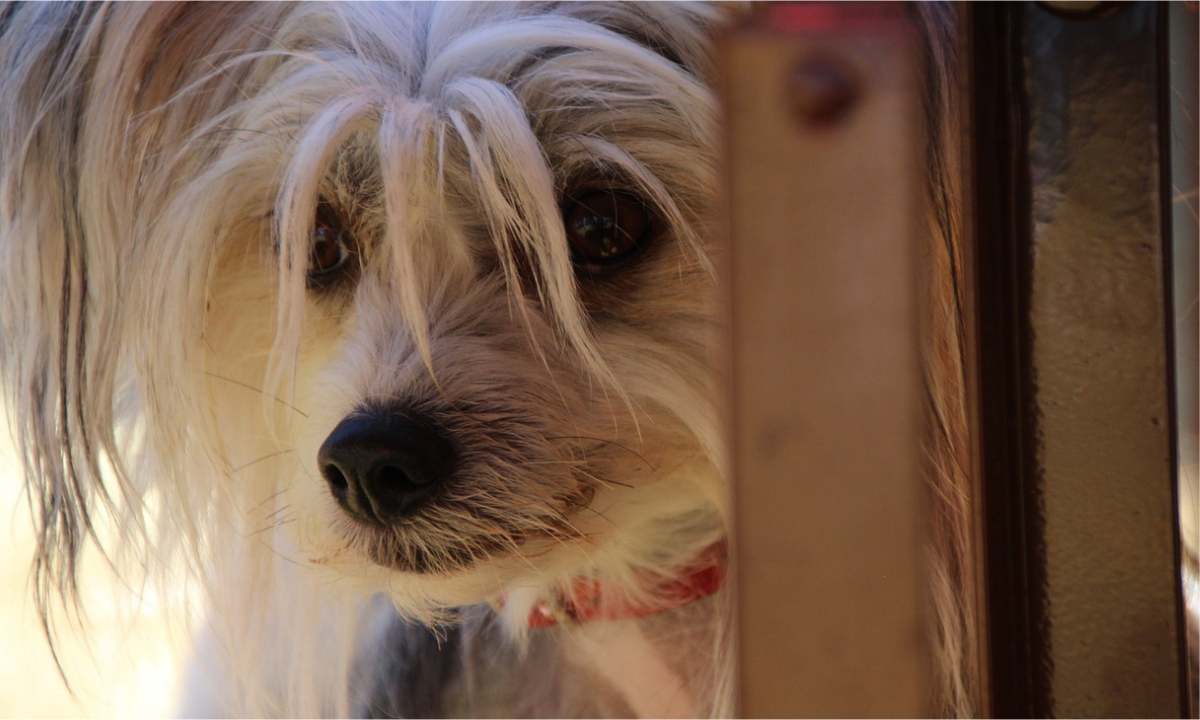Understanding Dog Fears and Phobias
Dog Fears and Phobias, often hailed as man’s best friend, possess a rich and complex inner world that extends beyond their endearing wagging tails and playful antics. Like humans, dogs experience a range of emotions, including fear and anxiety, which can manifest in various ways. In this comprehensive guide, we’ll delve into ten common fears and phobias that affect our canine companions, shedding light on the underlying causes and offering strategies to help them overcome these challenges.
1. Fear of Loud Noises :
One of the most prevalent fears among dogs is a fear of loud noises, such as thunderstorms, fireworks, or construction sounds. This fear, known as noise aversion, can trigger intense anxiety and panic in affected dogs. Dogs may exhibit trembling, panting, pacing, or attempts to hide when confronted with loud noises. To help dogs cope with this fear, providing a safe and quiet space, using calming aids such as music or pheromone diffusers, and desensitization training can be beneficial.
2. Fear of Strangers:
Some dogs may exhibit fear or anxiety around strangers, particularly unfamiliar people or visitors to the home. This fear, rooted in a lack of socialization or negative past experiences, can lead to behaviors such as barking, growling, or hiding. To help dogs overcome their fear of strangers, gradual exposure to new people in controlled settings, positive reinforcement techniques, and rewards for calm behavior can build confidence and trust.
3. Fear of Veterinary Visits:
Many dogs experience fear or anxiety when visiting the veterinarian, often due to associations with discomfort or unpleasant experiences, such as vaccinations or medical procedures. This fear can manifest as resistance to entering the veterinary clinic, trembling, or attempts to flee during examinations. To ease dogs’ anxiety during veterinary visits, gradual desensitization, positive reinforcement training, and calming techniques, such as gentle massage or soothing music, can help create a more positive experience.
4. Fear of Separation:
Separation anxiety is a common fear among dogs, characterized by distress or panic when separated from their owners or left alone. Dogs with separation anxiety may exhibit behaviors such as excessive barking, whining, destructive chewing, or house soiling. To help dogs cope with separation anxiety, gradual desensitization to being alone, providing mental and physical enrichment, and implementing a consistent routine can promote feelings of security and reduce anxiety.
5. Fear of Loud or Unfamiliar Objects:
Dogs may develop a fear of loud or unfamiliar objects, such as vacuum cleaners, bicycles, or umbrellas, due to their sudden appearance or loud noises they produce. This fear, known as noise sensitivity, can trigger avoidance behaviors, trembling, or attempts to escape from the perceived threat. To help dogs overcome their fear of loud or unfamiliar objects, gradual desensitization, positive reinforcement training, and counterconditioning techniques can build confidence and reduce fear responses.
6. Fear of Travel:
For some dogs, travel-related fears, such as fear of car rides or motion sickness, can cause significant distress and anxiety. Dogs may exhibit symptoms such as drooling, panting, vomiting, or attempts to escape from the vehicle. To help dogs feel more comfortable during travel, gradual desensitization to car rides, creating a positive association with the vehicle through rewards and treats, and using calming aids such as pheromone diffusers or natural supplements can alleviate anxiety and promote relaxation.
7. Fear of New Environments:
Dogs may experience fear or anxiety when exposed to new environments or unfamiliar surroundings, such as moving to a new home or traveling to unfamiliar places. This fear, rooted in uncertainty and lack of familiarity, can lead to avoidance behaviors, trembling, or attempts to seek refuge in familiar spaces. To help dogs acclimate to new environments, gradual exposure, positive reinforcement training, and creating a sense of security through familiar objects or scents can ease anxiety and promote confidence(dogs’ fears and phobias).
8. Fear of Other Animals:
Some dogs may exhibit fear or anxiety when encountering other animals, particularly those perceived as threatening or aggressive. This fear, known as animal aggression or reactivity, can lead to behaviors such as barking, lunging, or attempts to flee from the perceived threat. To help dogs overcome their fear of other animals, gradual desensitization, positive reinforcement training, and teaching alternative behaviors such as focusing on the owner can redirect their attention and promote calm behavior.
9. Fear of Water:
While some dogs love water and enjoy swimming, others may exhibit fear or anxiety when confronted with bodies of water, such as pools, lakes, or rivers. This fear, often rooted in negative past experiences or lack of exposure to water, can lead to avoidance behaviors, trembling, or attempts to escape from the water. To help dogs overcome their fear of water, gradual desensitization, positive reinforcement training, and introducing water gradually in a controlled and supportive environment can build confidence and promote positive associations.
10. Fear of Grooming or Handling:
Many dogs may experience fear or anxiety during grooming or handling procedures, such as baths, nail trims, or brushing. This fear can stem from discomfort, past negative experiences, or lack of desensitization to grooming routines. Dogs may exhibit avoidance behaviors, vocalization, or attempts to escape from the grooming process. To help dogs feel more comfortable during grooming, gradual desensitization, positive reinforcement training, and using gentle handling techniques can build trust and reduce anxiety.

In conclusion, understanding and addressing dogs’ fears and phobias is essential for promoting their well-being and ensuring a harmonious relationship with their owners. By recognizing the underlying causes of fear and implementing positive reinforcement techniques, desensitization training, and creating supportive environments, we can help dogs overcome their anxieties and lead happier, more confident lives. If you’re concerned about your dog’s fears or phobias, consulting with a certified animal behaviorist or veterinarian can provide valuable guidance and support tailored to your dog’s specific needs. With patience, compassion, and proper care, we can help our canine companions navigate the world with confidence and resilience.
